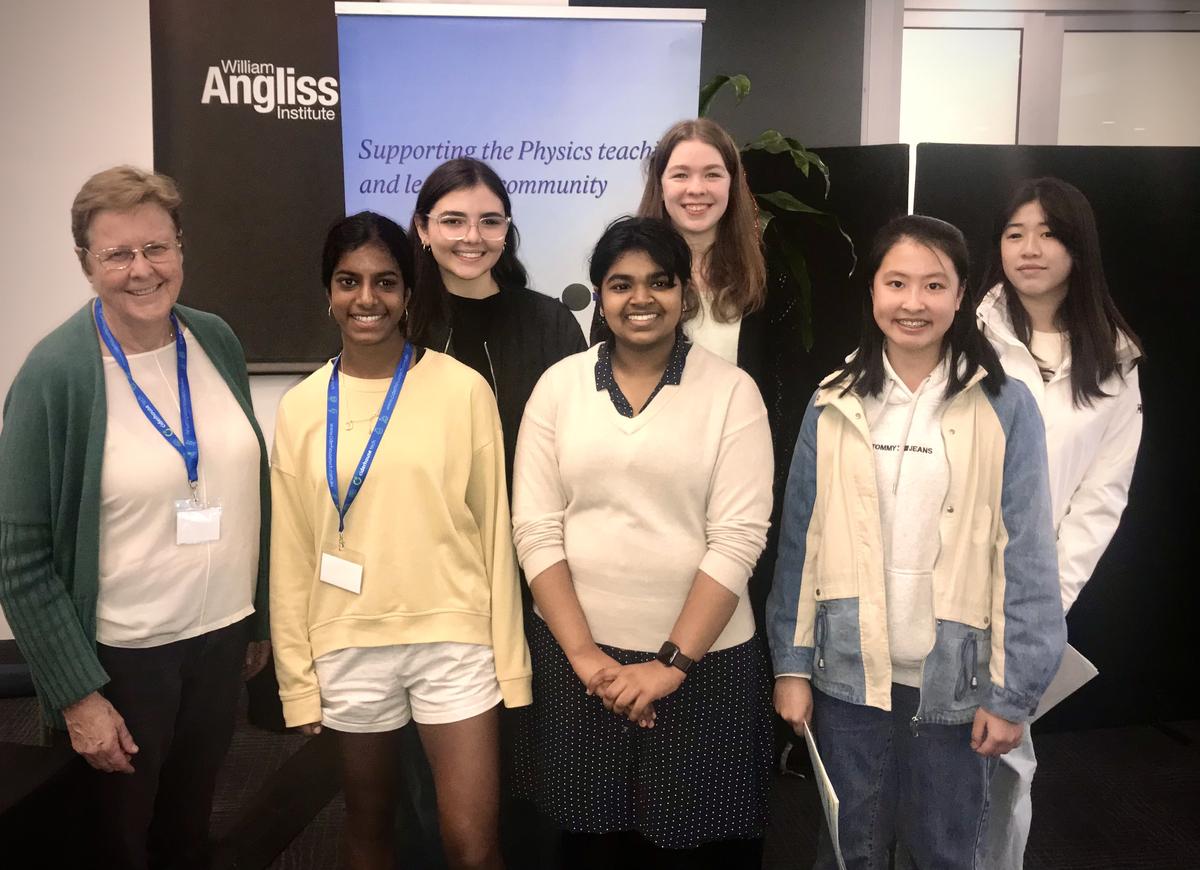A Day of Inspiration - Girls in Physics Excursion

On Thursday, May 15th, at the crack of dawn (7:20 am), six of us from University High School gathered outside the William Angliss Institute for the Girls in Physics Breakfast. Girls from schools across Victoria had flocked to Melbourne for this program.
The breakfast kicked off with a fun icebreaker activity that got us chattering away at our tables. One girl mentioned that she had to wake up at 4 a.m. and catch two trains just to make it to the event on time. Each table had a mix of high schoolers like us and university students who were currently studying physics or women already working in physics-related fields. I was lucky to sit with two PhD students—one studying particle physics and the other astrophysics (their topics sounded mind-blowing, but admittedly, a bit beyond my grasp).
The highlight of the event had to be the guest speaker, Dr Rachel Webster, who took the stage and dazzled us with her presentation on black holes. Dr Webster is an incredible woman with a remarkable career—she currently leads the Astrophysics research team at the University of Melbourne and, according to Wikipedia, was the second female professor of physics in Australia. Her talk was filled with such passion and excitement, it spread to us in the audience. We learned so much about the latest research on black holes and how much we still have yet to discover about the universe. After her presentation, we had the chance to ask questions and participate in a few more activities.
I believe this program did an excellent job of fostering interest in science, and I left with a renewed fascination for physics. Programs like these, which promote women in STEM careers, are crucial because we have so much to gain from having more (female) minds driving progress. Unfortunately, the number of girls and women in physics is still alarmingly low. In fact, Dr Webster mentioned that despite progress made over the past decade, the COVID-19 pandemic has set us back, and the number of women studying physics at the University of Melbourne has dropped to levels not seen since the 1980s. In my physics class of 19 students, only three of us are girls, and in my friend's class, there's just one other girl. These statistics are disheartening, especially for a subject as versatile as physics, a pathway to numerous fulfilling careers. At the breakfast, we met structural engineers, astrophysicists, and particle physicists to name a few. One physicist was from the Bureau of Meteorology, whose work involved assisting farmers in remote Pacific islands, while another was part of a company that manufactured solar panels with continuously increasing efficiencies and was transforming closed coal power plants into greener sources of energy. A university student at my table is doing an internship at an international company, helping them design various physics-related projects, from toys to tools.
All in all, it was an incredible experience that I took a lot out of. I highly encourage others, especially girls, to explore similar programs. There's something for everyone, and you never know—it could be a hidden passion waiting to be ignited within you.
Honey Raut

